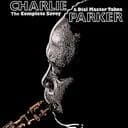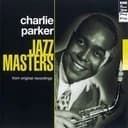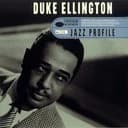Formula, Intervals, and the Chromatic Passing Tone
The C bebop dominant scale follows the interval formula of 2-2-1-2-2-1-1-1 semitones (whole-whole-half-whole-whole-half-half-half), producing the intervallic structure: root (1), major second (2), major third (3), perfect fourth (4), perfect fifth (5), major sixth (6), minor seventh (♭7), and major seventh (7). The notes C, D, E, F, G, A, B♭, and B create a scale where the chromatic passing tone—the major seventh (B natural)— bridges the gap between the characteristic dominant flat seventh (B♭) and the octave. This strategic placement of the chromatic passing tone transforms the seven-note Mixolydian mode into an eight-note bebop scale, solving a fundamental rhythmic challenge that bebop pioneers like Charlie Parker and Dizzy Gillespie encountered when playing rapid eighth-note lines.
The genius of adding this major seventh lies in its metrical function: when playing consecutive eighth notes in 4/4 time, an eight-note scale ensures that chord tones (root, third, fifth, and seventh) consistently fall on strong beats while passing tones fall on weak beats. This creates a natural rhythmic emphasis that reinforces harmonic structure during improvisation, making bebop lines sound both fluid and harmonically grounded. The chromatic half-step between B♭ and B creates voice-leading tension that resolves beautifully to the root C, adding the characteristic chromatic movement that defines the bebop jazz vocabulary.
Application in Bebop Jazz and C7 Chord Improvisation
The C bebop dominant scale serves as the primary improvisational tool over C7 (C dominant seventh) chords in jazz contexts, particularly in ii-V-I progressions where C7 functions as the V chord resolving to F major or F minor. Bebop musicians developed this scale specifically to navigate the fast harmonic rhythm of bebop compositions, where chord changes occur rapidly and improvisers need scales that articulate chord tones with rhythmic precision. When soloing over a C7 chord in tunes like "Confirmation" or "Anthropology," jazz pianists use the C bebop dominant scale to create lines that outline the C-E-G-B♭ chord structure while incorporating melodic chromaticism.
The bebop dominant scale excels in creating authentic bebop language through its ability to generate classic bebop devices: enclosures, chromatic approaches, and digital patterns. Jazz improvisers often emphasize the chord tones (C, E, G, B♭) on downbeats while using the scale tones (D, F, A) and the chromatic passing tone (B) to create forward motion and melodic interest on upbeats. This scale works particularly well in blues progressions, rhythm changes, and standard jazz repertoire where dominant seventh chords appear prominently, giving pianists a reliable harmonic framework that sounds authentic to the bebop tradition while providing melodic flexibility.
Piano Practice Techniques: Fingering, Rhythm, and Downbeat Emphasis
For effective piano practice of the C bebop dominant scale, begin with consistent fingering patterns that facilitate smooth execution across the keyboard. In the right hand ascending from middle C, use the fingering: 1(C)-2(D)-3(E)-1(F)-2(G)-3(A)-4(B♭)-1(B)-2(C), repositioning the thumb under the hand after the third finger on E and after the fourth finger on B♭. For the left hand, practice ascending with: 2(C)-1(D)-3(E)-2(F)-1(G)-3(A)-2(B♭)-1(B)-3(C), ensuring smooth thumb crossings. Practice hands separately first, then hands together in contrary motion to develop coordination and bilateral dexterity.
Rhythmic precision forms the foundation of effective bebop dominant scale practice. Set your metronome to a comfortable tempo (60-80 BPM initially) and practice the scale in strict eighth notes, deliberately emphasizing chord tones (C, E, G, B♭) by playing them slightly louder or with slight agogic accents. This downbeat emphasis drill trains your ear to hear the harmonic structure within the scalar movement, a critical skill for jazz improvisation. Progress to practicing the scale in triplets, sixteenth notes, and various rhythmic groupings (3+3+2, 3+2+3), always maintaining awareness of where chord tones fall within each rhythmic pattern.
Common Chord Progressions and Harmonic Applications
The C bebop dominant scale finds its most frequent application in jazz ii-V-I progressions where C7 functions as the dominant (V) chord. In the key of F major, the progression Gm7-C7-Fmaj7 provides the perfect context for employing this scale: play G Dorian over Gm7, switch to C bebop dominant over the C7 chord, and resolve to F major tonality. This progression appears in countless jazz standards including "Autumn Leaves," "All The Things You Are," and "There Will Never Be Another You," making the C bebop dominant scale an indispensable tool in every jazz pianist's improvisational arsenal.
In blues progressions, the C bebop dominant scale works beautifully over the I7 chord (C7) in a C blues, providing a sophisticated alternative to the blues scale that maintains the dominant seventh flavor while adding bebop chromaticism. The scale also functions effectively in turnaround progressions, where it can be applied to create forward momentum. Jazz musicians often employ the bebop dominant scale in sequential patterns, transposing it to match each dominant seventh chord in a circle-of-fifths progression, a technique that creates cohesive, harmonically sophisticated bebop lines.
Relationships to Other Scales and Modes
The C bebop dominant scale shares its foundational structure with the C Mixolydian mode, the fifth mode of F major, differing only by the addition of the major seventh (B natural) chromatic passing tone. Understanding this relationship helps jazz pianists conceptualize the bebop dominant scale as an enhanced Mixolydian mode specifically designed for bebop improvisation. While Mixolydian provides a seven-note framework with a flat seventh, the bebop dominant's eight-note structure offers superior rhythmic alignment for eighth-note bebop phrasing, making it the preferred choice in fast-tempo jazz contexts.
The C bebop major scale serves as the parallel bebop scale, sharing the same root but built on a major scale foundation rather than Mixolydian. Advanced jazz musicians often switch between these related bebop scales as chord qualities change within progressions, creating seamless chromatic voice leading. Jazz pianists develop fluency with multiple dominant scale options—bebop dominant, Mixolydian, altered, whole tone, diminished—learning to choose the appropriate scale based on harmonic context, tune style, and desired level of tension or consonance.





